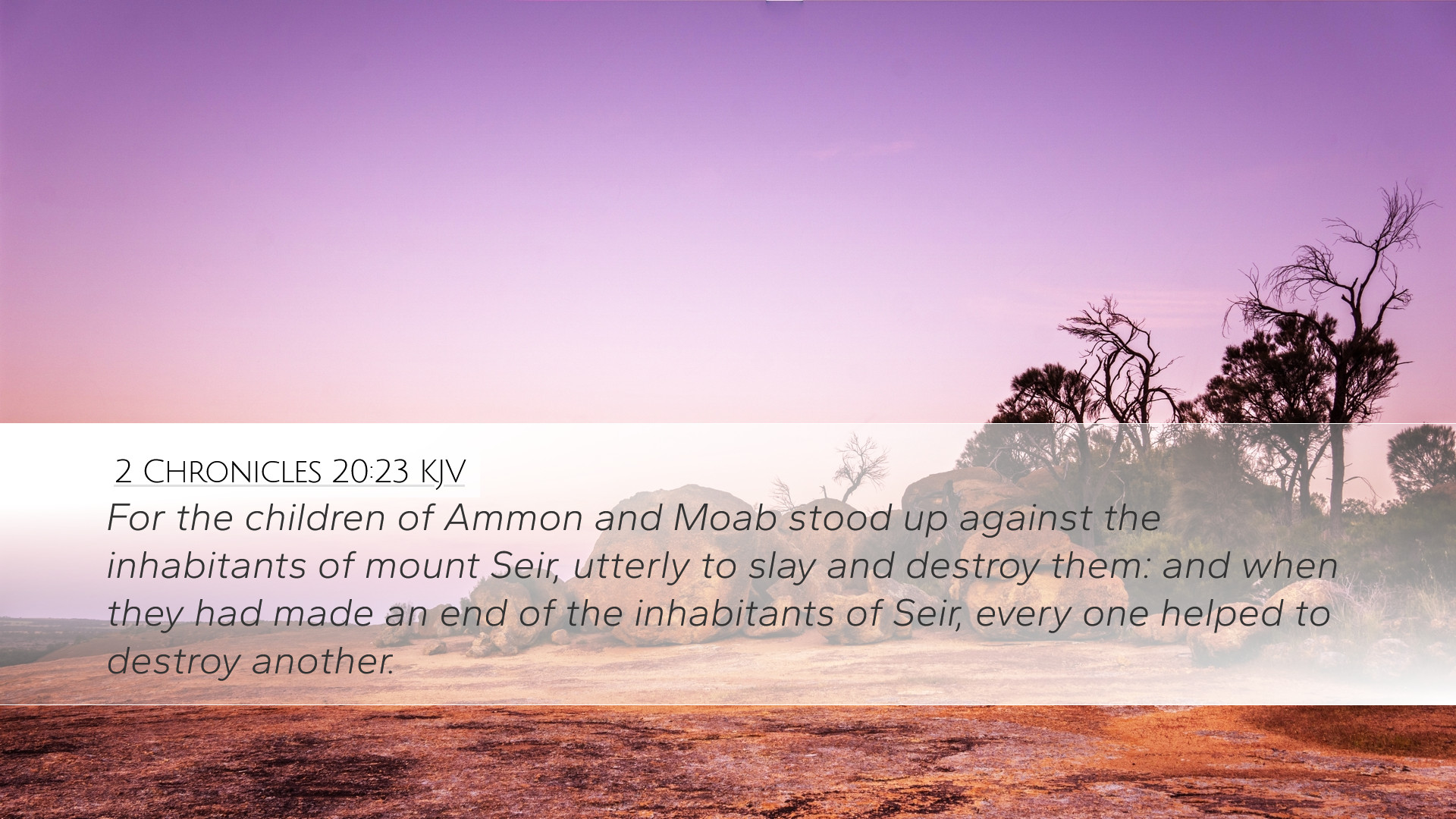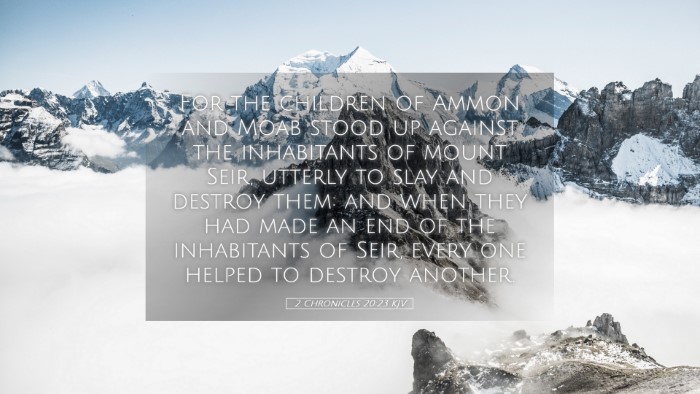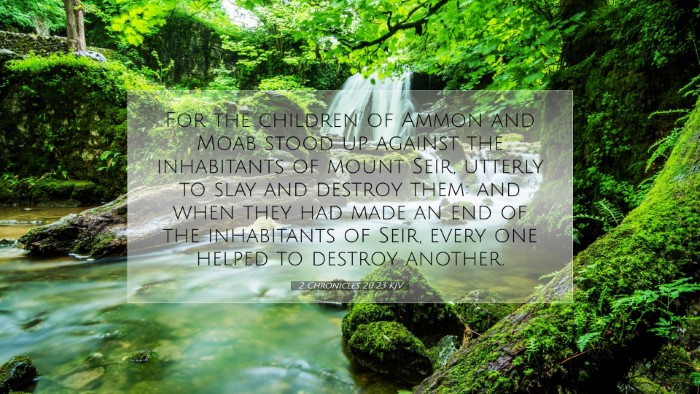Commentary on 2 Chronicles 20:23
2 Chronicles 20:23 states, "For the children of Ammon and Moab stood up against the inhabitants of mount Seir, utterly to slay and destroy them: and when they had made an end of the inhabitants of Seir, every one helped to destroy another." This verse is a part of a narrative that emphasizes God's providential guidance and the unexpected ways He brings victory to His people.
Contextual Background
This event occurred during the reign of King Jehoshaphat of Judah, a time when the nation faced an alarming alliance of enemy nations (Ammon, Moab, and others) poised to attack. The king sought divine guidance through prayer and fasting, illustrating a profound dependence on God amidst adversity.
Analysis of Key Themes
Divine Intervention
The central theme in this passage is divine intervention. Both Matthew Henry and Adam Clarke emphasize that the enemies turned upon each other as a direct result of God’s influence in the situation. It showcases that in times of despair, God can work in ways that are beyond human comprehension.
- Matthew Henry: He highlights that not only did Jehoshaphat and his people rely on God's promise, but the unfolding of events illustrates God's power to turn an enemy threat into a means of deliverance.
- Adam Clarke: Clarke notes the significance of God causing confusion among the enemies, which led to their mutual destruction instead of seeking to annihilate the people of Judah.
- Albert Barnes: He elaborates that this is a manifestation of God’s control over human hearts and intentions, a recurring theme in biblical history.
The Role of Unity in Conflict
This verse also hints at the idea of unity among adversaries leading to self-destruction. The alliance against Judah resulted in confusion and discord. Both scholars and theologians can draw parallels to contemporary conflicts, emphasizing that disunity in purpose, even among potential allies, can lead to downfall.
Theological Implications
This incident demonstrates several critical theological insights:
-
The Sovereignty of God: The verse illustrates that God is sovereign over nations and their leaders, orchestrating events toward His ultimate purposes. As Henry asserts, “God can confound the most potent enemies and turn them against each other.”
-
Prayer and Dependence: Jehoshaphat's initial response to the threat was to seek the Lord, which serves as a model for believers today. Clarke remarks that reliance on divine wisdom is critical in facing trials.
-
Unexpected Deliverance: The means by which God delivers His people may be unconventional, as evidenced here by instigating conflict among the enemies. Barnes notes that believers should trust God's mysterious workings.
Practical Applications
How does this ancient narrative apply to modern readers, particularly pastors and theologians? Here are some practical insights:
-
Encouragement in Dire Situations: The story provides hope that even when circumstances seem insurmountable, God is capable of turning the tide unexpectedly.
-
The Power of Collective Prayer: Just as Jehoshaphat led his people in prayer, church leaders today should prioritize seeking divine guidance collectively in the face of adversity.
-
Unity in the Body of Christ: Reflecting on the destructive nature of disunity among adversaries, the church is reminded of the importance of maintaining unity and purpose within the body of Christ.
Conclusion
In conclusion, 2 Chronicles 20:23 illustrates a profound truth: God’s omnipotence and sovereignty can lead to deliverance from seemingly impossible situations. The wise guidance of public domain commentaries enriches our understanding, affirming the need for faithful prayer, unity, and reliance on God’s divine providence. As scholars, pastors, and students delve into this scripture, they encounter not just historical narratives, but living applications of faith that resonate through the ages.


